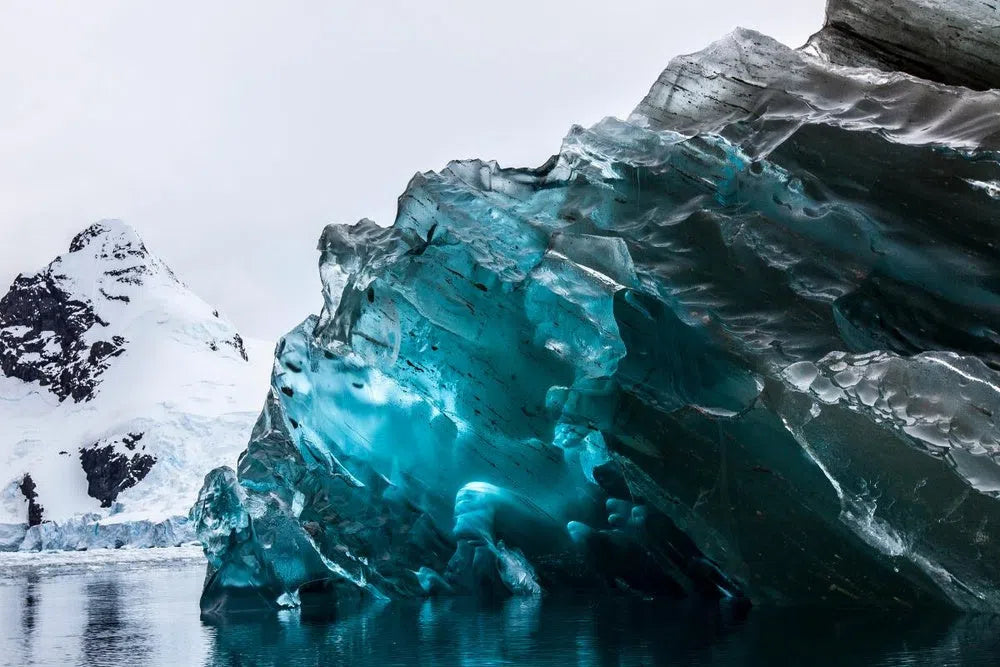
PurePhoto artist Alex Cornell traveled to Antarctica supposing he would capture the awe inspiring white and glacial-ice covered landscape…little did he know that on a day expedition aboard the National Geographic Explorer to the Cierva Cove, Cornell would discover a remarkable feat of nature that would set his images apart and spin his work into viral fame – flipped icebergs.
“Almost everything here is blinding white: sun, snow, icebergs, the bellies of penguins. Go outside without sunglasses just for a few seconds and you’re a bat for the rest of the day. Photographing this blown-out landscape is a challenge: Perpetual daylight and surface reflection make for difficult lighting conditions; biting wind discourages casual lens swapping; and the abundance of epic cliffs, meteor-sized icebergs, and bumbling birds make choosing your subjects a constant scramble.” Medium.com
A 30-foot mass jutted above the water, glossy and blue and remarkably unmarred by snow or weather. The scientist aboard his boat was excited about this rare anomaly, and suggested that the iceberg had flipped – quite recently too, judging by the lack of snow present on its surface – and exposed its clear and jewel-like underside.
“Icebergs form when chunks of freshwater ice calve—or break off—from glaciers and ice shelves, as well as other icebergs. Because of the varying densities of ice and saltwater, only about 10 percent of an iceberg will ever show at the surface, and that protruding tip will gather dirt and snow. Melting can trigger calving, but it can also change the equilibrium of an iceberg, causing it to flip.” Smithsonian Mag
The remarkable blue-ness of this iceberg is unique to ancient ice. As icebergs age, their ice becomes denser and darker, absorbing a small amount of the red-light spectrum. This leaves a bluish tint to the reflected light that we see. The addition of minerals and other organic matter that have possibly steeped into the iceberg over time could contribute to the iceburg’s vivid jewel-like color. (Smithsonian Mag)
As only 10% of an iceberg is usually visible above the surface, seeing the massive underside of these icy formations is a unique and special experience, made even rarer by the presence of a high-quality camera so recently after a flip. Cornell acknowledges the rarity of his experience:
“It’s like if you see a double rainbow over a whale breaching… you’re just lucky that you’re there,” he says. “Anybody could have been there to capture it, so I am happy that I was the one for this one.” Smithsonian Mag
Cornell shot the images with a Canon 5DMKII and a Canon 16-35mm F2.8 lens.
Check out the video below to see footage captured with his camera and a chest-mounted GoPro and learn more about how his images were capured and processed.
Embedded iFrame



